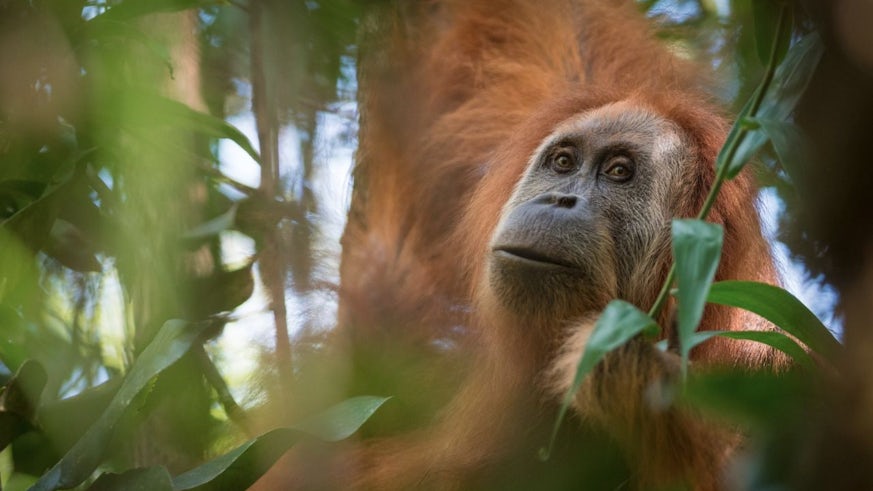New great ape species uncovered in Indonesia
2 November 2017

An international team, including researchers from Cardiff University, has discovered a new orangutan species within Indonesia.
Pongo Tapanuliensis, otherwise known as the Tapanuli Orangutan, was found in the three Tapanuli districts of North Sumatra after close analysis of the ape inhabitants of the Batang Toru Ecosystem.
Dr Benoît Goossens from Cardiff University’s School of Biosciences said: “The Batang Toru populations of orangutans in Sumatra were only rediscovered fairly recently in 1997. However, it wasn’t until 2013 that the researchers received the skeleton of an adult male orangutan that was killed during conflict, and we realised that there were significant physical and genetic differences in these apes.
“By comparing the skull to other orangutans, it was clear that this skull showed dramatic differences. This suggested that the Batang Toru population was potentially unique, so our international team of researchers worked together to gather further evidence.”
The international team of collaborative researchers, made up from the Sumatran Orangutan Conservation Programme, Indonesian authorities, the Australian National University and Cardiff University, and led by Professor Michael Krützen at University of Zürich, determined the unique genetic differences of the apes by completing the largest genomic study of wild orangutans in history.
Professor Michael Krützen said: “When we realized that Batang Toru orangutans are morphologically different from all other orangutans, the pieces of the puzzle fell into place..."
"The oldest evolutionary line in the genus Pongo is actually found in Batang Toru orangutans, which appear to be direct descendants of the first Sumatran population in the Sunda archipelago."
Computer modelling reconstructed the population history of the three orangutan species, revealing that the Batang Toru apes have been isolated for 10,000 to 20,000 years.
Dr Pablo Orozco-ter Wengel from Cardiff University said “The divergence between the Tapanuli orangutans and the other two orangutan species came as a surprise.
“It pushed the divergence between these species to as far as 3 million years ago, with the South of Toba orangutans being more similar to the Bornean orangutans, than to the North of Toba orangutans.”
With no more than 800 individuals, the new species of orangutan are now considered the most endangered species of great ape on the planet.
Dr Goossens said: “It’s exciting to describe a new great ape species in the 21st century, however with such low numbers of the Batang Toru orangutans, it is vital that we now work to protect them..."

"Mining, hunting, de-forestation and human encroachment all risk the lives of these great apes."
“It is crucial that we work to conserve the forest, because if we do not take the steps needed to protect the Tapanuli Orangutans, we could see their discovery and extinction within our lifetime.”







